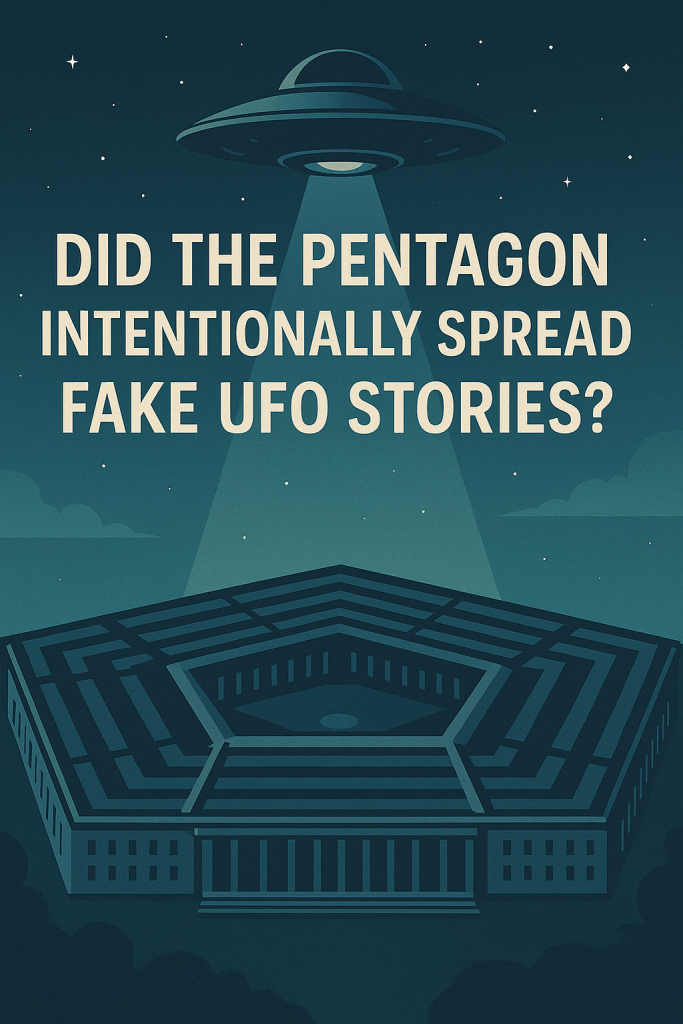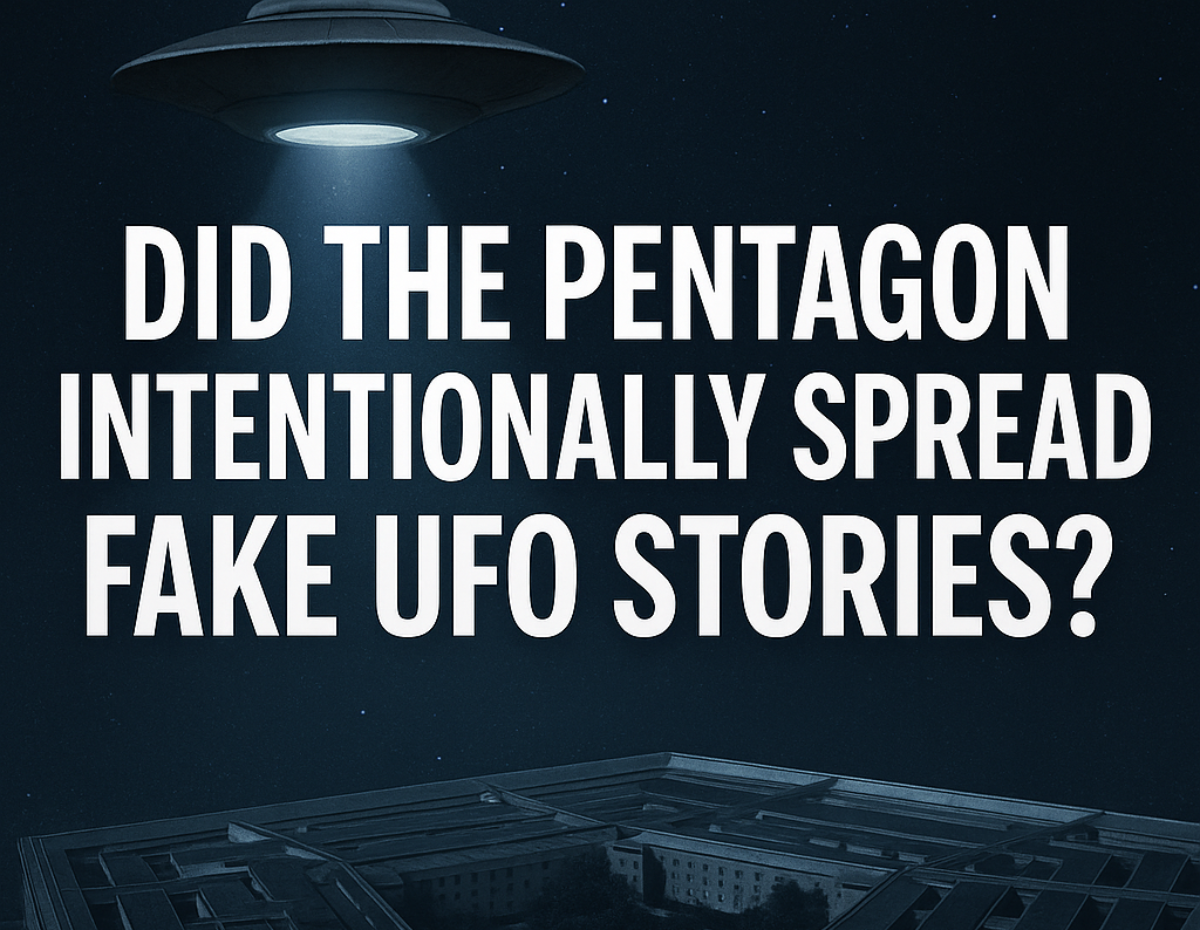Overview:
National Security Strategy/ The Pentagon UFO cover-up is no longer just a fringe theory — it’s a strategic operation that may have shaped decades of public perception about unidentified flying objects. While pop culture has often portrayed UFOs as extraterrestrial encounters, mounting evidence suggests the U.S. military deliberately spread false alien narratives to protect classified technology.
Recent reports suggest the Pentagon may have strategically used false UFO narratives as a cover for secret military programs. This tactic, spanning decades, could have served to divert public attention from top-secret technology like stealth aircraft, electromagnetic pulse (EMP) weapons, and experimental aerospace projects.

🔍 Disinformation or National Security Strategy?
In the 1980s, reports emerged of UFO sightings near Area 51, which later turned out to coincide with top-secret test flights of the F‑117 Nighthawk stealth aircraft. It’s now believed that military officials intentionally leaked “alien” stories to confuse observers and maintain secrecy.
In some cases, newly assigned Air Force personnel were even fed false narratives as part of their initiation—known internally as the “Yankee Blue” deception unit.
⚡ The Robert Salas Case and EMP Weapon Tests
Table of Contents
In 1967, former Air Force officer Robert Salas claimed a UFO incident shut down nuclear missile silos. But newer reports suggest what he witnessed may have been an EMP weapons test, designed to disable electronics and simulate interference from a mysterious source. This again points to a military-originated event being framed as extraterrestrial for secrecy.
🛰️ AARO and the Pentagon’s uap news History
The All-domain Anomaly Resolution Office (AARO), formerly AATIP and the UAP Task Force, was designed to study anomalous aerial phenomena. However, critics argue that these offices have often blurred the line between investigation and strategic misinformation, allowing UFO myths to flourish as a smokescreen.
🎯 Conclusion: UFOs as a Convenient Cover?
- It’s increasingly clear that many UFO stories were either misunderstood test flights or deliberate misinformation campaigns.
- These myths provided convenient public distraction from classified aerospace development and advanced weapons systems.
- The UFO narrative may have helped protect programs from adversarial intelligence by framing advanced tech as “alien.”
Conclusion: What We Now Know
The Pentagon UFO cover-up appears to be less about aliens — and more about advanced technology, psychological misdirection, and national security strategy. While not all UFO reports are fabrications, many high-profile incidents have turned out to be clever diversions or misinterpretations of military programs.
As public access to declassified materials improves and oversight increases, we may finally uncover how much of the UFO legend was engineered — not by extraterrestrials — but by Earth’s most powerful military.
Perhaps the most unsettling idea is that the Pentagon UFO cover-up has been a form of long-term psychological warfare. By seeding the public with half-truths, science fiction tropes, and mysterious leaks, the Pentagon may have shaped public belief in UFOs to serve national defense goals.
Alien stories attract attention — but they also distract from drone surveillance, radar testing, and high-tech aerospace development that the military doesn’t want revealed.
The All-domain Anomaly Resolution Office (AARO) is the latest U.S. government initiative to officially study UAPs. But some critics argue that AARO — like its predecessors AATIP and the UAP Task Force — may serve more as bureaucratic smoke screens than genuine research units.
While the government now publicly acknowledges UAPs, the extent to which it shares complete, unfiltered data remains questionable.
📰 The Hill – Did the Pentagon Spread False UFO Stories?
📖 Wikipedia – All-domain Anomaly Resolution Office
UFO Sightings and Stealth Jet TestingWhat Is the National Security Strategy?
The National Security Strategy (NSS) is the official policy framework that outlines how the United States will protect its national interests at home and abroad. Issued periodically by the White House, the NSS defines the military, diplomatic, intelligence, and economic priorities that guide all major U.S. security decisions.
In essence, it’s a roadmap for:
- Defending against foreign threats
- Maintaining military superiority
- Securing technological advancements
- Controlling information that could jeopardize national stability
In the context of the Pentagon UFO cover-up, it’s believed that misinformation about UFOs may have been part of a strategic deception — not to manipulate the public for fun, but to:
- Divert attention away from classified weapons programs
- Confuse rival nations and prevent espionage
- Maintain secrecy around emerging aerospace technologies
Such actions, while controversial, are often justified as being in line with protecting national security.
